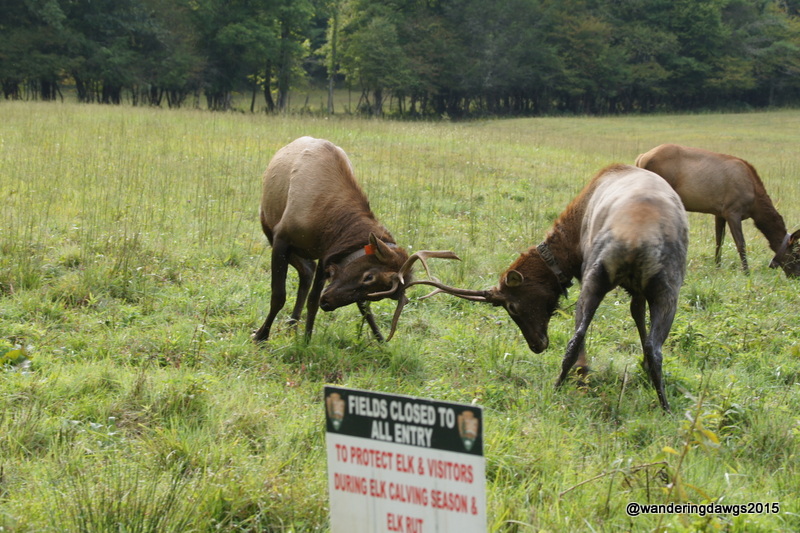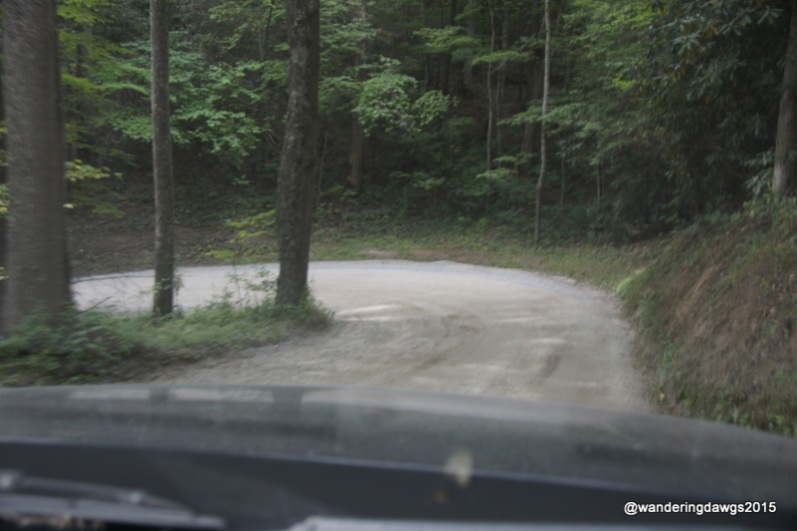After a great stay in Virginia we headed south to the Smokies in North Carolina in search of bugling elk. I’ve seen elk in many different places but never thought I would be able to experience the sound of a bull elk bugling without traveling all the way to Yellowstone or the Rocky Mountains. I was wrong. There are elk in the Great Smoky Mountains.
Great Smoky Mountains National Park is the most visited national park in America. We’ve traveled there several times over the years but I had never heard about the elk in Cataloochee Valley until my friend Holly posted last year about the Bugling Elk in Cataloochee Great Smoky Mountains NP.
Elk were once abundant in the southern Appalachian Mountains. Over hunting and habitat loss caused the elk to be eliminated from North Carolina many years ago.
In February, 2001, the National Park Service began an experimental reintroduction of elk into Cataloochee Valley by releasing 25 elk from the Land Between the Lakes National Recreation Area on the Tennessee-Kentucky border. Another 27 elk from Canada were released in 2002.
Getting to Cataloochee Valley
Cataloochee Valley is located on the eastern side of the Great Smoky Mountain National Park. The nearest towns are Maggie Valley and Waynesville.
Getting to the valley involves an 11 mile drive on Cove Creek Road. This is a road that is not for the faint of heart. The turnoff to Cove Creek Road is only about a mile from Interstate 40 and the first part of the drive is on a narrow, curved paved road that passes by homes tucked away on the side of the mountain. After a few miles, the pavement is replaced by gravel. All along the way are few guardrails, many switchbacks, blind curves, and hairpin turns. As we continued on the road I felt like we were millions of miles away from civilization.
We stopped at an national park overlook for a spectacular view before continuing into the valley.
Cows on first day
We made two trips into Cataloochee Valley. On our first visit we were thrilled to see elk by the first field. A young elk was grazing in the field with a large cow in the woods across the road. We stopped to watch a large bull elk at the far end of another field and had another bull cross the road in front of the truck. Alas, I wasn’t able to get pictures of them.



Bugling Bulls
The breeding season, also known as the rutting season, is in the fall. During this time the bull elk make their bugling calls to attract females and challenge other bulls. We ventured down Cove Creek Road again a second day in hopes of seeing and hearing some bugling bulls.
The best time to view elk is late in the afternoon before sunset so we arrived later in the afternoon than we had the first day. We weren’t disappointed. There were several elk in the first field we came to and as we continued down the road a lone bull stood in a small field. As we pulled off the road and rolled down the windows we watched him raise is head and we heard him make his bugle sound. We could hear more bugliing far off in the distance.


Later on we came across another bugling bull. We think he was trying to attract a female we saw in the woods. She wasn’t paying any attention to him.


Young elk
We didn’t witness any large bulls sparring but we did enjoy watching two young elk locking antlers right beside the truck. After a few minutes, they went back to grazing.





History of Cataloochee
The first people to visit Cataloochee Valley were Native Americans who fished and hunted but did not settle there permanently. In the early 1800’s white settlers moved into the valley.
By the early 1900’s Cataloochee was the largest settlement in the Smokies with almost 200 buildings. Today a few of the remaining buildings can be seen as you drive through the valley and others are accessible by one of the many trails.
By 1938, most of the families had moved out of the valley after selling their land to the government for the creation of the Great Smoky Mountains National Park.
We camped at Creekwood Farm RV Park in Waynesville, NC. The campground is less than a mile from the turnoff to Cove Creek Road.










I loved your post. A wonderful description of an area we try and visit every fall and spring. You were smart to go back later for the bugling… It’s been too long since I have seen bull elks going at it, the sound of the clanking antlers, seeing the bull rare his head back with an amazing bugling sound. It’s a beautiful time in the Smokies and the leaves are gorgeous around there in late October, early November.
Cove Road really is an adventure. We pulled a popup to the campground years ago, and it made that narrow twisting road with hairpin curves all the more exciting. In the spring, there are several placs along the road that are awash in wildflowers. And, there are lots of wildflowers in Cataloochee, along with the history of the first occupants before the park was established.
LikeLiked by 1 person
Holly, thank you for posting about those magnificent elk last year! I would have never known about Cataloochee Valley if not for that. We had never ventured to that part of the GSMNP before so we planned our trip just to see the elk. The day we saw the bugling all the action was in the first few fields. We drove to the last big field, parked and put out our chairs to wait to see if any came out. An old man in overalls got out of his car, walked over to us and asked “Are you waiting for your favorite one?” He is a member of the NC Elk Society and helped bring the elk to Cataloochee from Kentucky and Canada. He was 86 years old and very interesting to talk to.
LikeLiked by 1 person
Very neat to have bumped into that guy from NC! I am glad you enjoyed that part of the Smokies.
LikeLiked by 1 person
What a day with nature you had seeing and hearing those elk. Wow!
LikeLike
Yes it was a great day!
LikeLike
Fantastic photos of the Elk… wow! Nice to hear there are Elk in other parts of the U.S. and it’s always exciting to hear them bugle. The Smokies look lovely. A place we’ve never visited. Perhaps one day 🙂
LikeLike
Thanks Ingrid! The Smokies are really beautiful especially in the fall. We were a little too early for the peak colors but we were lucky to have gorgeous clear blue skies and of course the elk were fantastic. There are also black bears in the area but they never showed up while we were there.
LikeLiked by 1 person
What a great show you caught. 🙂
LikeLike
There was so much going on I couldn’t capture it all with my camera!
LikeLiked by 1 person
How neat that you got to see so many elk and hear those beautiful males bugle!! We’ve only heard the bugling once and it was during our stay in Jasper NP in Alberta. We were awoken one morning to a huge male bugling right next to our MH. Sure is something to witness. Your photos are great. Love those young bucks sparring:)
LikeLike
Thank you! The only place we have seen elk so close was in Whistler’s campground in Jasper. We came back from a drive one afternoon to find about five females laying in an empty campsite in our loop. I didn’t even get out of the truck to take the pictures of the young bucks sparring. We pulled over to the side of the road to watch several young bucks grazing when those two started sparring.
LikeLike
Great elk photos!
LikeLike
Thank you! They were amazing to watch.
LikeLiked by 1 person
Awesome photos, looks like an awesome destination even without the Elk too! Elk are magnificent 🙂
LikeLike
Thank you! The Smokies are a great place to visit.
LikeLike
Awesome!! Bugling and fighting bulls, you definitely hit jackpot- lovely captures!
LikeLike
Thanks! Those elk put on quite a show for us!
LikeLike
I have never visited the Smokies… I have never seen a Bull Elk! You showed me both and now I want to go see the Elk and the Smokies. Beautiful pictures of this amazing animal!
LikeLike
Thank you! The Smokies are worth a visit. They are especially beautiful in the spring and fall. This was the first time we ever saw elk there and our first time to witness the bull elk bugling.
LikeLike